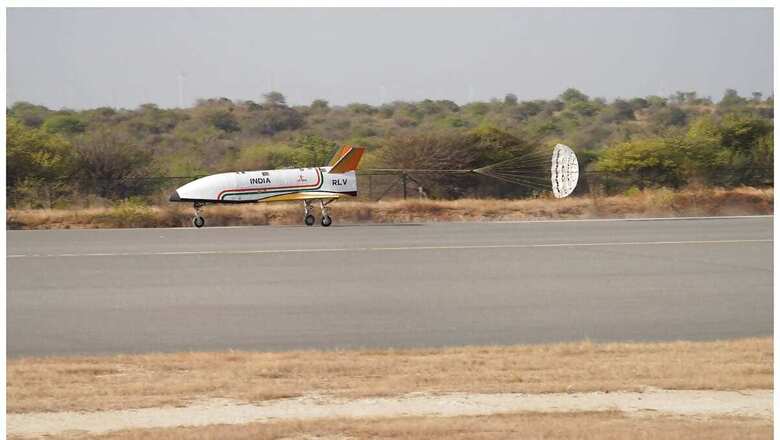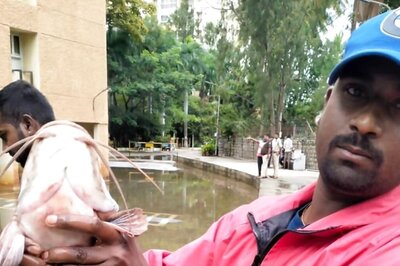
views
Indian Space Research Organisation (ISRO) on Sunday successfully conducted the Reusable Launch Vehicle Autonomous Landing Mission (RLV LEX).
The test was conducted at the Aeronautical Test Range (ATR) in Chitradurga, Karnataka, the national space agency said. ISRO conducted the experiment in collaboration with the Air Force and Defence Space Research Organisation.
ISRO took to Twitter over the successful conduct of the landing mission and said “India achieved it!”
“India achieved it! ISRO, joined by @DRDO_India @IAF_MCC, successfully conducted the Reusable Launch Vehicle Autonomous Landing Mission (RLV LEX) at the Aeronautical Test Range (ATR), Chitradurga, Karnataka in the early hours on April 2, 2023,” the tweet read.
India ???????? achieved it!ISRO, joined by @DRDO_India @IAF_MCC, successfully conducted the Reusable Launch Vehicle Autonomous Landing Mission (RLV LEX)
at the Aeronautical Test Range (ATR), Chitradurga, Karnataka in the early hours on April 2, 2023.
— ISRO (@isro) April 2, 2023
ISRO successfully conducted the Reusable Launch Vehicle Autonomous Landing Mission (RLV LEX). The test was conducted at the Aeronautical Test Range (ATR), Chitradurga, Karnataka in the early hours on April 2, 2023.
According to a ISRO press release, the RLV took off at 7:10 am by a Chinook Helicopter of the Indian Air Force as an ‘underslung load” and flew to a height of 4.5 km (above MSL).
“Once the predetermined pillbox parameters were attained, based on the RLV’s Mission Management Computer command, the RLV was released in mid-air, at a down range of 4.6 km,” the press release said.
“Release conditions included 10 parameters covering position, velocity, altitude and body rates, etc. The release of RLV was autonomous. RLV then performed approach and landing maneuvers using the Integrated Navigation, Guidance & control system and completed an autonomous landing on the ATR air strip at 7:40 AM IST. With that, ISRO successfully achieved the autonomous landing of a space vehicle,” it added.
‘State-of-the-art Technologies’
The autonomous landing was carried out under the exact conditions of a Space Re-entry vehicle’s landing —high speed, unmanned, precise landing from the same return path— as if the vehicle arrives from space, ISRO said.
“Landing parameters such as Ground relative velocity, the sink rate of Landing Gears, and precise body rates, as might be experienced by an orbital re-entry space vehicle in its return path, were achieved,” ISRO said.
The space agency said that RLV LEX demanded several “state-of-the-art technologies” including accurate navigation hardware and software, Pseudolite system, ‘Ka-band’ Radar Altimeter, ‘NavIC’ receiver, indigenous landing gear, Aerofoil honey-comb fins and brake parachute system.
A First In The World
In a first in the world, ISRO said, a winged body has been carried to an altitude of 4.5 km by a helicopter and released for carrying out an autonomous landing on a runway.
According to ISRO, RLV is essentially a “space plane with a low lift to drag ratio requiring an approach at high glide angles that necessitated a landing at high velocities of 350 kmph”.
The landing experiment utilised several indigenous systems, ISRO said, addign that localised navigation systems based on pseudolite systems, instrumentation, and sensor systems, etc., were developed by it.
“Digital Elevation Model (DEM) of the landing site with a Ka-band Radar Altimeter provided accurate altitude information. Extensive wind tunnel tests and CFD simulations enabled aerodynamic characterization of RLV prior to the flight. Adaptation of contemporary technologies developed for RLV LEX turns other operational launch vehicles of ISRO more cost-effective,” ISRO said.
Read all the Latest Tech News here

















Comments
0 comment